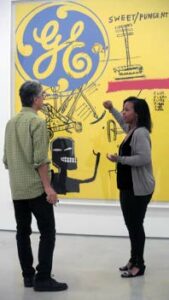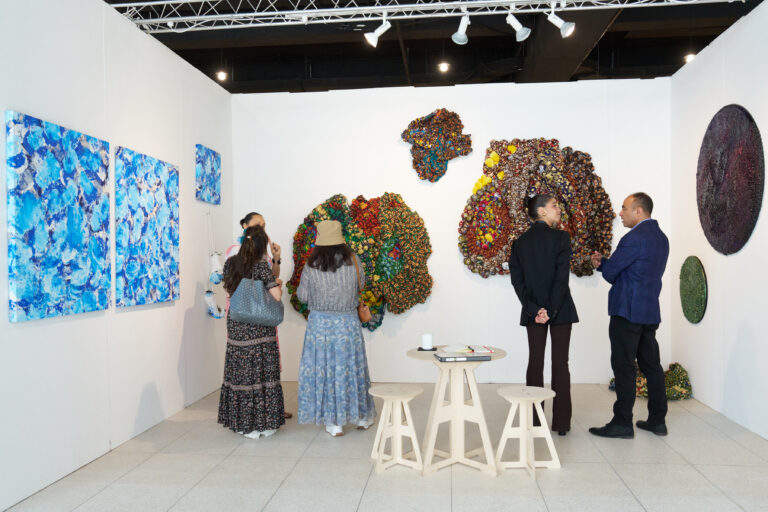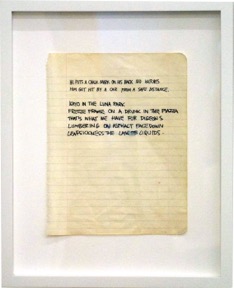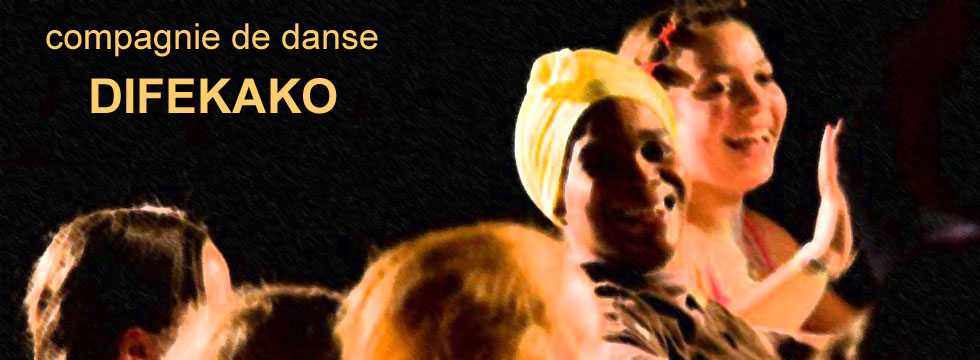As artists, we maintain a make-believe world where we turn our observations about the world inside out, toss them around over time and throw it all back. This can take the form of an object, an idea or a number of art forms. This allows us to momentarily clear our heads. With this process, we attempt not to name things specifically, but allude to a meta-narrative. Hopefully, this occurs fluidly without too much pretension. It’s an honest day’s work.

Jean Michel Basquiat with friends, Abidjan, Cote D’Ivoire, 1986
Every now and then, when there is not a time for the more meditative process, we take more immediate approaches. Notebooks allow a speedy delivery of our contemplations and a process where our conceptual thinking enters into the world one page at a time.
The photograph above depicts Jean-Michel Basquiat on a trip to Abidjan, Cote D’Ivoire two years before his death in 1988. He is accompanied by art dealer Bruno Bischoberger and Jennifer Goode. The excursion is noteworthy considering that it occurred during the time The Unknown Notebooks were created. Most likely there are other more significant artworks produced by Basquiat completed during this time also, and it would be intriguing to understand what influences Basquiat’s trip to Africa may have had on the content of these particular notebooks.
It has been speculated that Basquiat used his notebooks to work through an editorial method where experimentation with words, text and line drawings merge and recede to become complete compositions. For instance, similar phrases, words, and descriptions of actions are repeated in varying combinations and scales throughout the exhibit’s notebooks and artworks. While not necessarily altering the meaning, the wordplay may create the rhythm, placement, and composition providing the artist with the best possible effect for the completed artworks. Does the powerful presence of Basquiat’s motifs change whether written on a sheet of paper, a wooden cube, Xeroxed copy or silkscreened onto canvas?

EL 135.07 Jean-Michel Basquiat Untitled 1985 Xerox collage on wood box 11 1/8 x 8 1/2 in.
The type of notebooks Basquiat used was the black and white marbleized type popular during the 1980’s. Notebook pages were curated and archived to create an engaging exhibition of small works which convey the same power and authentic vision of his much larger paintings.
At the Perez Art Museum Miami, “Basquiat: The Unknown Notebooks” has provided a regional context with additional Basquiat artworks from local collectors. There is an exquisite painting/drawing with the single word “ego” in front of an open captioned box, inside a vintage gold frame with a missing section of the frame border that visually connects with the image inside the frame. This singular work is a tremendous example of the restraint and textural surface control Basquiat commands with seemingly the least visual effort. In the technique, this work spans painting, drawing, sculpture and performance documentation. It has an understated David Hammond type of presence, which connects directly with art movements like Arte Povera, Dada, Fluxus, Self-Taught Art and with a touch of Afro-Punk glitter. (I’m just saying. If you are a fan of Afro-American front yard art displays, you get it.)
El 135.02.02 Jean-Michel Basquiat Untitled (He puts a chalk mark on his back)
The installation at the Perez has an intimate pedestrian scaled atmosphere and flow. There is a street mural-sized graphic of the marble-like image found on notebook covers and the emblematic three pointed crown of Basquiat’s that has been commodified to death. But in this installation, with appropriate scale and white lines against a black field, the crown has returned to its throne. It just feels right.

Maria Elena Ortiz, Perez Art Museum during press preview stands in front of “Sweet/Punget (GE)”,1984-85, Acrylic and silkscreen on canvas, Collection of Tommy Hilfiger, Roving Buffalo photo @2016
The gallery where the notebook’s pages are installed has a traditional museum white wall atmosphere. The pages are hung as a formal procession of white frames dotted along walls. At the moment this becomes a bit monotonous, turn to the left and the gallery opens up into a larger gallery which has a cozy 1980’s club vibe with black painted walls and film alcoves showing two films with that fuzzy, grainy-green video feel. Nice.
This space provides an opportunity to digest the previous room’s notebook pages and begin to visually experience the connection between Basquiat’s notebooks and his extended works on larger surfaces. Upon entering there are two wooden doors where “The Basquiat” did his thang with painting, Xerox copying and producing images where you gotta just let it loose and feel, rather than speaking in “art talk” to the choir. The work features a floating Black head with an incredulous-looking expression which for me sums up the last few years of police killings and other affronts to Black Americans. (When will it end?) The doors anchor the space like urban sentinels or outdoor street signage. The effect is refreshing while facilitating a transition to other areas in the room where large and typically sized paintings, works on wood and paper drawing dialogue in new ways.
I spent time moving back and forth from the notebook drawing gallery and the larger gallery comparing the works. Then I realized that no matter the scale, Basquiat gives us a history lesson, social critique, and high comedy. I was reminded of a recently read book, The Sellout by Paul Beatty and once again Basquiat is as relevant and vital in2016 as he was in the 1980’s.
The exhibit ends with a reader-friendly wall mounted timeline of the artist’s brief life. And of course, the requisite documents reference section. The total exhibit creates a vibrant and visceral space to recall, reconnect and a renewed experience one of Black America’s brightest and most important contemporary artists. The exhibit opens the 2016 art season here in Miami and gives us that little something extra that we can certainly appreciate and really feel.












